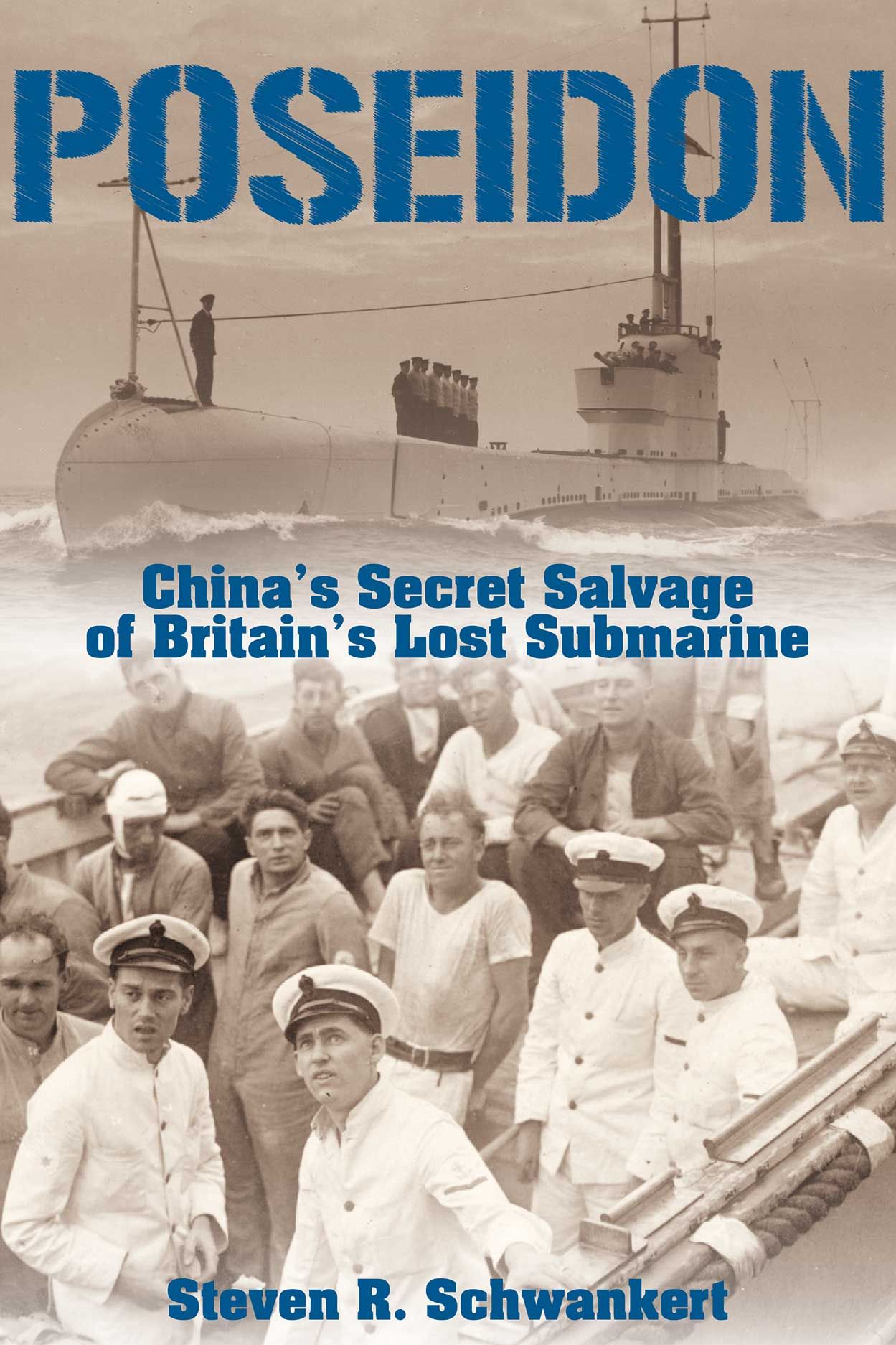A British Royal Navy submarine, HMS Poseidon, collided with a Chinese steamer in 1931 and sank off the coast of China. The episode made headlines globally but was quickly forgotten as Japan’s invasion of Manchuria took the limelight. Decades later, China quietly salvaged the British submarine.
The HMS Poseidon was involved in a terrible collision at a time when the People’s Republic of China (PRC) did not exist and the British had a naval base in Weihaiwei (Weihai), which was leased from 1898 to 1930. The British vessels continued to operate out of the facility in the early 1930s even after the lease ended.
The HMS Poseidon (P99) was a Parthian-class submarine of the Royal Navy that operated out of the British naval base in Weihaiwei and was primarily deployed in the Yellow Sea.
On June 9, 1931—94 long years ago—Poseidon collided with the Chinese merchant ship SS Yuta in clear visibility, off the Chinese coast. The incident took place when the submarine was conducting surface exercises about 20 miles north of Weihaiwei.
The submarine’s starboard hull sustained a big V-shaped hole from the collision, which caused it to descend to a depth of 130 feet or about 40 meters in a matter of minutes.
The ship was carrying a crew of 56 men at the time of the collision, 31 of whom managed to climb onto the Yuta and escape to the surface before the ship sank. This left at least 26 personnel trapped on board the submarine.
Notably, about eight crew members in the forward compartment used the Davis Submerged Escape Apparatus, an early oxygen-based breathing system, marking the first recorded submarine escape of its kind.
Of these eight men, three perished and five were able to make a dramatic underwater escape that would alter the rules underwater because, until that incident, the crew members had been instructed to just wait for assistance in case of an accident.
Following the accident, the Royal Navy started equipping submarines with escape chambers and increased its research into decompression treatment.
Needless to say, the collision and the sinking of the ship spawned great global attention. It made it to the front page of the New York Times, and later inspired a feature film, focusing solely on the marvellous escape of the stranded crew underwater.
However, it was soon forgotten, as attention shifted to Japanese imperialism. In 1931, Japan staged the Mukden Incident, using it as a pretext to invade and occupy Manchuria, establishing the puppet state of Manchukuo by 1932.
Internal resistance to unfair treaties for leasing ports and other assets to imperial countries, such as Britain, grew as a result of the Japanese invasion, which fueled anti-foreign sentiment in China.
Although Britain’s influence diminished as Japan’s increased, the British naval port at Weihaiwei, where HMS Poseidon operated until its sinking in 1931, remained a persistent reminder of imperialism.
The HMS Poseidon, which remained 40 meters below the sea, faded from memory.
However, while the world had moved on from the incident and rules of politics changed after the end of the Second World War, the British submarine was resting near the Chinese coast, but within the communist country’s reach.
And, China acted several decades later, salvaging the submarine in secrecy.
China’s Quiet Salvage Of HMS Poseidon
China salvaged HMS Poseidon in 1972, more than four decades after the tragic sinking. Kept under wraps for decades, the salvage attempt came to the fore in 2002, with an article that appeared in the Chinese journal Modern Ships.
The article, while not very widely circulated, caught the attention of some researchers, leading to further investigations.
American journalist and diver Steven Schwankert stumbled upon the article while planning an underwater expedition to wrecks from the 1884-85 Sino-Japanese War and became fascinated by the paucity of available material.
What followed was extensive research to seek further answers. The hazy accounts of the Poseidon and sepia photos he saw online captivated him, so he decided to find out more. He thought the wreck was still on the seabed close to the port city of Weihai in the Shandong province.
Schwankert later went to Hong Kong for work, where he uncovered the details of the 1972 salvage mission—a closely guarded secret up until then. Surprisingly, he also managed to find the testimony of a man who claimed to have seen the ship being dragged out of the sea.
Schwankert detailed his findings in his 2012 book “Poseidon: China’s Secret Salvage of Britain’s Lost Submarine.” These findings later inspired a documentary called ‘The Poseidon Project.”
“When you start something like this, you say I’m going to start at point A and end at point B. Then suddenly you realise that point B doesn’t exist, so you have to go to point C,” said Schwankert in 2013, detailing his quest to find the truth. “The challenge wasn’t to find the submarine per se, but to prove that the story of the salvage was correct.”
Schwankert never discovered the precise reasons for the salvage all those years later. However, he had some theories: maybe China, which was then in the middle of the Cultural Revolution, wanted the scrap metal, or maybe fishing nets were getting stuck on its periscope.
He also postulated that the wreck might have been retrieved as a practice by the underwater special forces of the Chinese Navy. “In 1972, China’s nuclear submarine programme was just getting started,” he said. “If you have that kind of a programme, one of the first things you need to know is: if we lose this thing, can we recover it?”
During the Cultural Revolution, which lasted till 1976, China was focused on building its military and technological prowess, including its navy. Salvaging a sunken submarine like HMS Poseidon, which lay at a depth of 40 meters, might have provided a practical opportunity to test and develop underwater recovery techniques, equipment, and expertise.
This would have been considered valuable for enhancing its naval capabilities, especially in the context of regional tensions and its aspirations to assert maritime influence.
China may have also studied the wreck for technological insights, though its age would have likely limited its strategic value.

Following these disclosures, which resulted in several diplomatic exchanges and a renewed interest in Poseidon and her crew, the British government requested an explanation from China. Additionally, the family members of the people who died in the tragedy asked China to tell them where they were buried.
Historians investigating the loss of HMS Poseidon and its rescue by the Chinese discovered gravestones in chaotic piles at the former British naval cemetery on the island of Liugong, carrying names, dates, and epitaphs of the dead sailors that were easily readable despite being desecrated.
This further proved that the submarine was indeed raised, but a cautious China decided to erase the identity of the dead sailors.
“Some people have suggested that I go out there and look at the site anyway. I said How can you do that? How can you prove a negative?” Schwankert said. “Every indication is that they brought up the whole thing.”
China eventually admitted that a salvage mission was carried out in 1972, but stopped short of providing more details. The covert operation, like the sinking of HMS Poseidon, is now lost to history.



